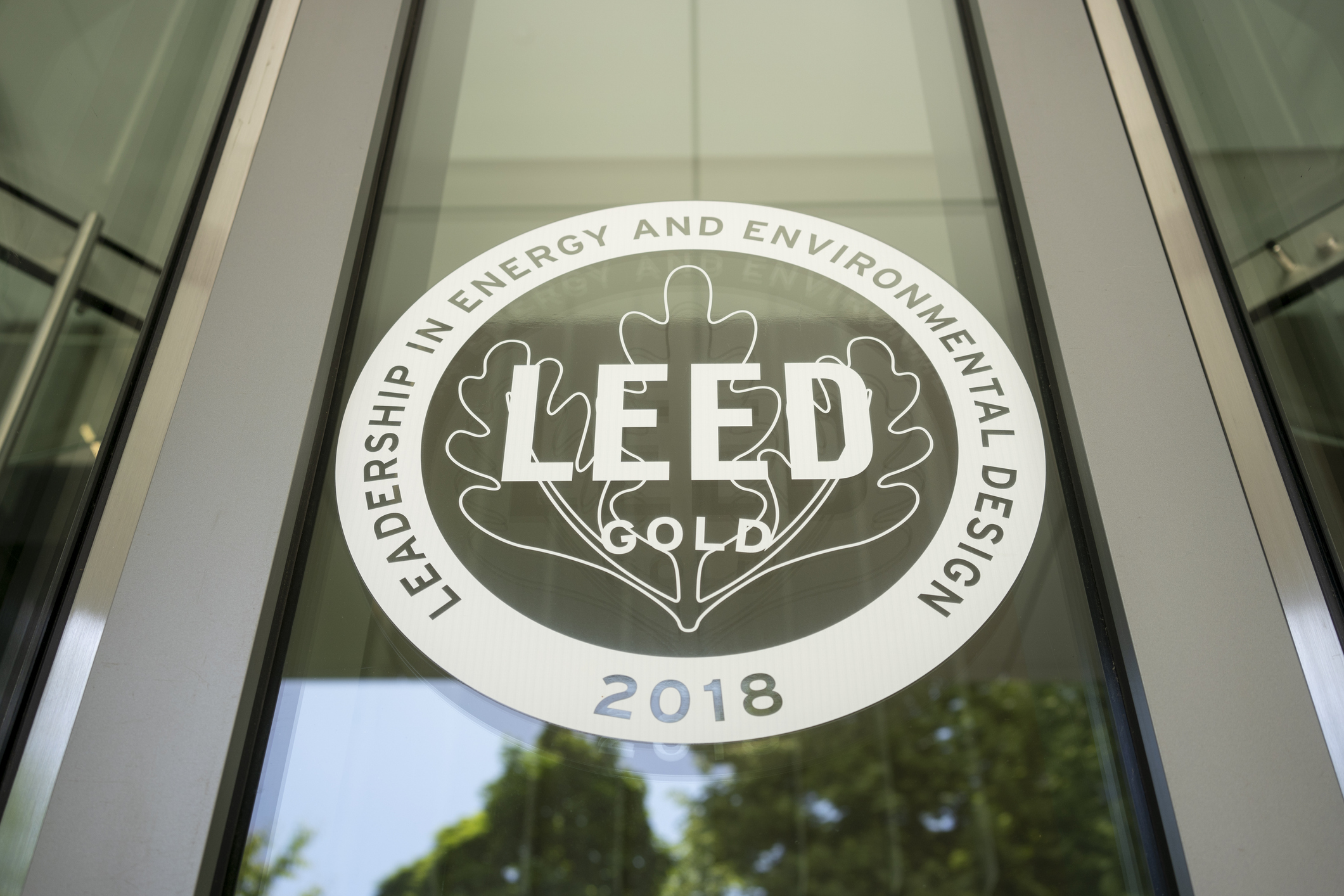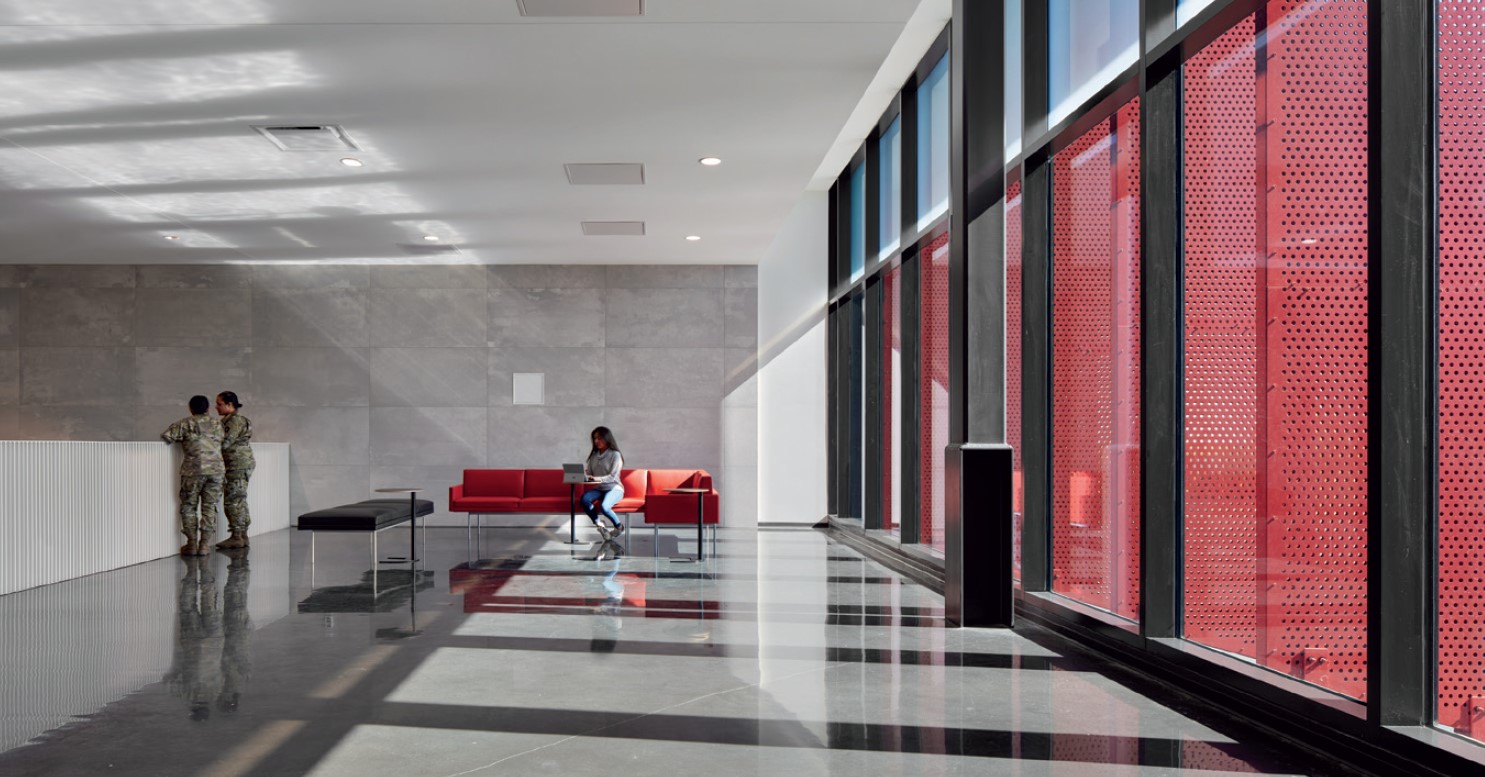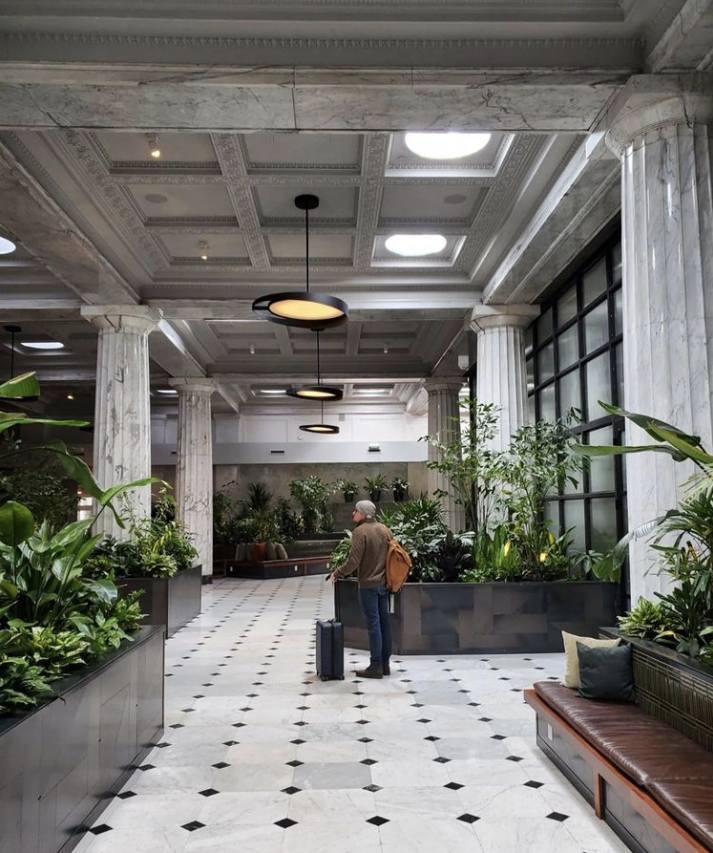AchievING LEED Certification with Daylight

HOw We HelP Design Professionals
Daylight holds immense potential to transform the way we design and inhabit buildings. Apart from its inherent aesthetic appeal, daylight offers a multitude of benefits that encompass both human comfort and environmental sustainability. Recognizing these advantages, green building certifications such as LEED (Leadership in Energy and Environmental Design) and B3 (Building, Benchmarking, and Beyond) have integrated daylighting as a crucial aspect in their assessment criteria. So what is the significance of daylight in these certifications, how can you leverage them, and how can Daylight Specialists help?
What is LEED?
LEED (Leadership in Energy and Environmental Design) certification is a green building rating system developed by the U.S. Green Building Council. It provides a framework and set of criteria for assessing and certifying the sustainability performance of buildings. LEED certification promotes environmentally responsible design, construction, operation, and maintenance practices that prioritize energy efficiency, water conservation, indoor environmental quality, materials selection, and sustainable site development.
Daylighting’s Contribution to LEED Certification
Daylighting can contribute to multiple categories within LEED certification, though the specific categories where daylighting strategies can fulfill requirements may vary depending on the specific rating system. LEED awards points for incorporating daylighting strategies that enhance occupant comfort, reduce energy consumption, and provide a connection to the outdoor environment. The daylight-related credits typically consider factors such as daylight availability, glare control, daylighting design, and views of the outside. Here are some common categories where daylighting can play a role:
Category |
Credit |
Points |
|---|---|---|
| Energy and Atmosphere (EA) | Optimize Energy Performance | 0-20 |
| Indoor Environmental Quality (IEQ) | Daylight | 0-2 |
| Quality Views | 0-1 | |
| Sustainable Sites (SS) | Site Development—Protect or Restore Habitat | 0-2 |
| Innovation (IN) | Innovation in Design | 0-10 |
How We Maximize LEED Points with Daylighting
Daylighting in the Energy and Atmosphere (EA) Category
Daylighting can indirectly contribute to points within the EA category through the Optimize Energy Performance credit. The Optimize Energy Performance credit awards points based on the percentage of energy cost savings achieved compared to the baseline building performance. Designing and implementing a high-performance daylighting system that effectively illuminates the space while minimizing energy use can contribute to meeting or exceeding the required energy performance thresholds and potentially earn points under this credit.
The number of points awarded for the Optimize Energy Performance credit depends on the project’s energy cost savings compared to the baseline building. The specific thresholds and point allocations are as follows:
- 1 point: energy cost savings of at least 18% compared to the baseline.
- 2 points: energy cost savings of at least 22% compared to the baseline.
- 3 points: energy cost savings of at least 26% compared to the baseline.
- Additional points (up to 18 points): energy cost savings increases by 2% increments, with additional points awarded for higher savings.
Measurements & Requirements
Whole Building Energy Simulation (up to 18 points):
- Conduct a whole building energy simulation using approved simulation software. Compare the proposed building design with a baseline building design to demonstrate energy efficiency.
- HOW WE HELP: We strategize the perfect daylighting solution that reduces the need for artificial lighting that will contribute to energy savings and improve the Energy Use Intensity (EUI) performance. Our strategies focus on top-down daylighting opportunities that will compliment and supplement perimeter daylighting. Not only do we provide expertise on the appropriate daylighting systems, we optimize the daylighting design can help mitigate heat gain and reduce cooling loads, further contributing to energy efficiency.
Enhanced Commissioning (2 points):
- HOW WE HELP: Daylight Specialists can also assist with the “Enhanced Commissioning” credit, earning your project (2) additional points. We implement commissioning activities to verify that the daylighting systems are installed and function as intended. We document and demonstrate the performance of daylight-responsive controls and automatic daylight-dimming systems.
Daylighting in the Sustainable Sites (SS) Category
The Protect or Restore Habitat credit in this category recognizes projects that preserve or enhance the ecological value of the project site. While daylighting itself does not have a specific credit, integrating daylighting strategies can support the goals of this credit by considering the ecological impact of the project and enhancing the connection between the built environment and nature.
Daylighting strategies that take into account the surrounding natural environment and ecological context can help earn points under this credit.

Here are some ways we work with design professionals to earn points in this category:
- Protect or Restore Habitat (1 point): We design daylighting strategies that minimize disruption to existing habitats and preserve natural features. We consider fenestration placement and shading devices to minimize bird collisions and wildlife disturbances. Daylighting devices also make indoor plant habitats significantly more viable which can contribute to your project being protected in perpetuity as a habitat area.
- Maximize Open Space (1 point): Our daylighting strategies can provide access to views and maximize outdoor open space.
- Heat-Island Reduction (1-5 points): Our tubular daylighting devices can be fitted alongside vegetated surfaces to reduce heat gain, and our skylights can be fitted with reflective materials that reduce heat absorption.
- Light Pollution Reduction (1-2 points): While daylighting inherently reduces light pollution, our daylighting design also considers the placement and orientation of windows, skylights, and other openings to maximize natural light while minimizing glare, sky glow, and light spillage. Our design can also influence exterior lighting strategies. By incorporating daylight-responsive lighting controls, artificial lighting can be automatically adjusted or dimmed in response to available natural light.
Daylighting in the Indoor Environmental Quality (EQ) category
In the Indoor Environmental Quality (EQ) category, daylighting can help earn points in two credits: Daylight and Quality Views.
Daylight Credit: The Daylight Credit focuses on providing access to natural daylight in regularly occupied spaces to enhance visual comfort, occupant well-being, and productivity.

Here are some key requirements and measurements:
Daylight (1-2 points):
- Requirement: Achieve a specific target of daylight illumination in regularly occupied spaces.
- Measurement: Conduct daylight simulations using appropriate software tools to calculate and document the spatial daylight autonomy (sDA) and annual sunlight exposure (ASE) metrics. The sDA measures the percentage of the space that receives a certain level of daylight, while ASE measures the potential for excessive sunlight exposure.
Daylight Dimming (1 point):
- Requirement: Install daylight-responsive lighting controls that automatically adjust artificial lighting based on available daylight.
- Measurement: Implement a lighting control system that uses photosensors or other devices to monitor daylight levels. Demonstrate that the lighting system reduces artificial lighting output based on available daylight, achieving a specified percentage of lighting power savings.
Quality Views (1-2 points):
- Requirement: Provide a direct line of sight to the outdoors from regularly occupied spaces to promote daylight access and views to the exterior.
- Measurement: Calculate the view glazing area and ensure it meets the minimum requirements defined by the credit. Assess the depth of the daylight zone, which should extend a specified distance from the view glazing. Evaluate the use of glare-control devices to maintain visual comfort.
Quality Views for Schools (1-2 points):
- Requirement: Provide views to the outdoors in a significant portion of classrooms and learning spaces in educational projects.
- Measurement: Calculate the view glazing area, view width, and view depth to ensure compliance with the credit requirements. Evaluate the obstruction factors to ensure that views are unobstructed or minimally obstructed.
Daylighting in the Innovation (IN) Category
The IN category recognizes projects that implement innovative strategies and practices not specifically addressed by other LEED credits. While there is no specific credit dedicated solely to daylighting in the IN category, daylighting strategies can be used to earn points through the Innovation in Design credit.
To earn points under the Innovation in Design credit, project teams must provide documentation and evidence showcasing their daylighting strategies’ innovative aspects. This may include technical reports, case studies, manufacturer specifications, or other supporting materials that demonstrate the uniqueness, effectiveness, and environmental benefits of the chosen daylighting approach.

Here's how we can help:
Daylighting Design Innovations (2-5 Points):
- Implement innovative daylighting design strategies that go beyond standard practices, such as unique window configurations, light redirecting devices, or innovative shading solutions.
- Use advanced daylight modeling techniques or simulations to optimize daylight performance and demonstrate superior design outcomes.
- Integrate advanced technologies, such as smart sensors or adaptive control systems, to enhance daylighting performance and energy savings.
Daylighting Performance Monitoring (1-3 Points):
- Employ advanced monitoring systems to measure and analyze the actual performance of daylighting strategies in terms of illuminance levels, glare control, or energy savings.
- Demonstrate the effectiveness of daylighting design through post-occupancy evaluations and occupant feedback, showcasing the positive impacts on well-being, comfort, and productivity.
Daylighting Research and Development (1-2 Points):
- Contribute to industry knowledge and innovation by conducting research and development projects focused on improving daylighting technologies, materials, or design methodologies.
- Collaborate with academic institutions or research organizations to explore new advancements in daylighting science, leading to improved performance and energy efficiency.
Daylighting Education and Outreach (1-5 Points):
- Develop educational programs or workshops that raise awareness about the benefits of daylighting and promote its integration into sustainable building design.
- Share project case studies and lessons learned regarding successful daylighting strategies to inspire and inform other building professionals.
Choose Daylight Specialists as Your Daylighting Partner
At Daylight Specialists, our team of experts goes beyond just meeting certification criteria – we take a holistic approach to weaving daylight with design, ensuring your project benefits from the full potential of natural light while creating a healthy and sustainable building. Collaboration lies at the heart of our process. We prioritize understanding your unique needs and design goals, working side-by-side with you to incorporate daylighting strategies seamlessly into the architectural plan. Our client and design-centric approach ensures that your project meets certification goals and that your design and vision for your project are fully realized.
What sets us apart is our in-depth knowledge of daylighting products and cutting-edge expertise in the field. We stay up-to-date with the latest advancements in daylighting technologies, ensuring that we provide the most efficient and innovative solutions for your project.
With a proven track record, we have successfully guided numerous projects toward LEED certification and other green building certifications. Our experience working with design professionals has honed our ability to navigate the intricacies of the certification process, making it a smooth and rewarding journey for our clients.
Join us on the path to sustainable, energy-efficient, and healthy buildings. Choose Daylight Specialists as your trusted partner for achieving LEED certification and creating spaces that foster productivity, comfort, and environmental responsibility. Let’s illuminate your vision together.
